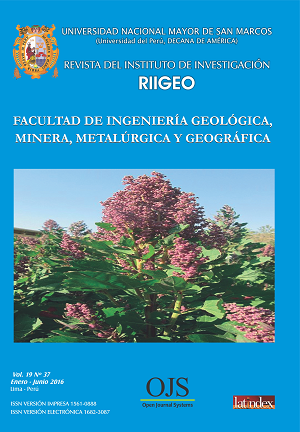Methane gas and its relationship with livestock activities in the province of Manabi, Ecuador
DOI:
https://doi.org/10.15381/iigeo.v19i37.12959Keywords:
cattle and methane emissions, magnitude of CH4 emissions, intergovernmental panel on climate change, enteric fermentation emissionsAbstract
The objective of the research was to determine the relationship between the quantity of cattle and methane emissions, in a study period of ten years, allowing to respond to the problem posed regarding the magnitude of CH4 emissions in the province. from Manabi. The study was based on the guides and guidelines issued by the intergovernmental panel on climate change, 2006, using the IPCC 2006 version 2.10 software. The results showed that CH4 emissions are considerably high, 531.68 Gg. CH4, highlighting enteric fermentation emissions, with approximately 50 times more methane than manure management emissions. Likewise, non-dairy cattle are responsible for a higher number of methane emissions compared to dairy cattle, in the case of enteric fermentation, with 287,724Gg. CH4, while for manure management, the highest emissions are generated by dairy cattle, with 7,217 Gg. of CH4. The hypothesis that there is an increase in methane emissions was accepted, due to the increase in the population of cattle.
Downloads
Published
Issue
Section
License
Copyright (c) 2016 Juan Carlos Luque Vera

This work is licensed under a Creative Commons Attribution-NonCommercial-ShareAlike 4.0 International License.
AUTHORS RETAIN THEIR RIGHTS:
a. Authors retain their trade mark rights and patent, and also on any process or procedure described in the article.
b. Authors retain their right to share, copy, distribute, perform and publicly communicate their article (eg, to place their article in an institutional repository or publish it in a book), with an acknowledgment of its initial publication in the Rev. Inst. investig. Fac. minas metal cienc. geogr.
c. Authors retain theirs right to make a subsequent publication of their work, to use the article or any part thereof (eg a compilation of his papers, lecture notes, thesis, or a book), always indicating the source of publication (the originator of the work, journal, volume, number and date).






